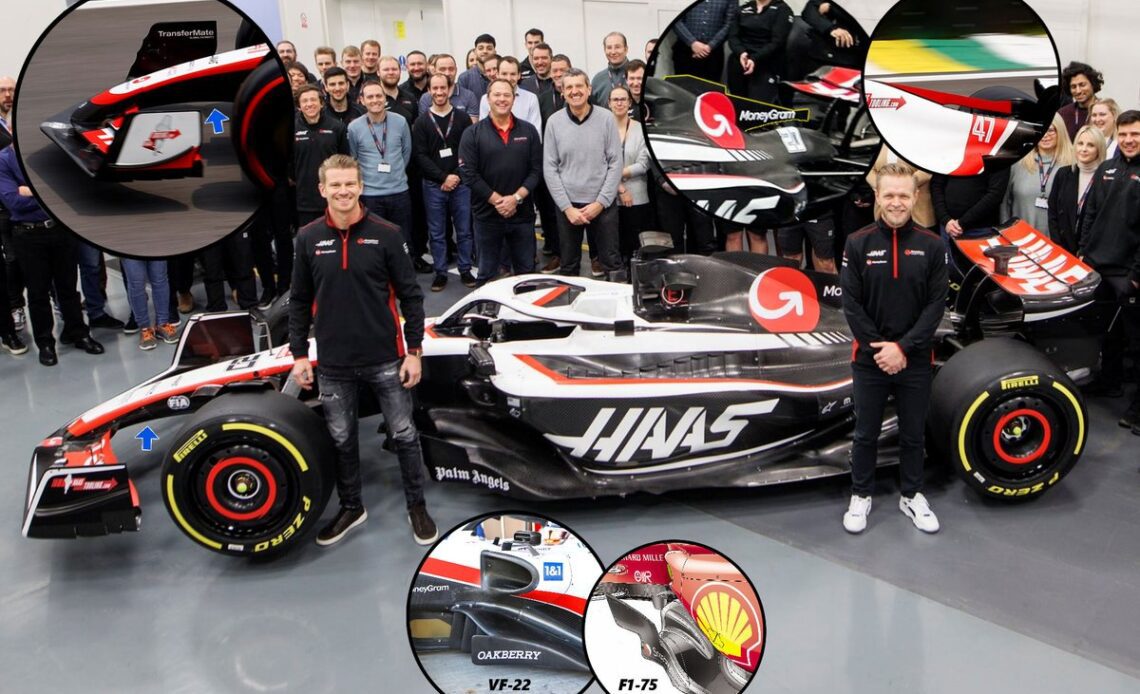And whilst there are no real surprises in its DNA, there’s plenty of detail for us to pick over when comparing it to last year’s challenger and some of its competitors.
At the front, the video showing the VF-23 rollout from the garage has revealed a change to the ratio of static and moveable sections of the front wing flaps. There is more surface granted to the static section beside the nose this season when compared with last year’s challenger.
Meanwhile, the upper flaps are more unloaded in the outer section than previously was the case, with them also being narrower as they meet with the endplate.
The endplate itself also differs from last year, with the leading-edge knuckles having been abandoned and the dive plane’s shape and position also different from last season.
As all teams search for ways to save weight, it would appear that Haas has been able to remove some of the bulk from its nose assembly. However, with limited access to images at this stage, it could simply be a parallax effect.
A reduction in the underside bulk of the nose (blue arrow) would also have aerodynamic benefits, with more space for the airflow to move along the car’s centreline.
Haas VF-23
Photo by: Haas F1 Team
As we move further rearward, we can see the obvious comparisons that will be drawn between this year’s Haas and last year’s Ferrari, which is a common trend for the team given the synergy shared between them in terms of the components that are purchased from the Scuderia.
Nonetheless, the team has continued to build upon the bathtub-style sidepod design, a feature that it had already appropriated during the course of last season. This includes the shape and position of the upper surface cooling gills, which have been moved further down inside the bathtub section than they were in 2022.
One standout difference in the overall design of the sidepods is the shape of the inlet. Whilst Haas has taken the general wide but shallow approach that Ferrari did last season, it has also incorporated a retracted upper leading edge on the VF-23.
This bears some similarity to what we saw from Red Bull last season, albeit not as retracted as the RB18.
The rest of the sidepod is an optimisation of last year’s concept, with a steep undercut beneath the front of the sidepod, a relatively flat flank and an overhanging tail section to help direct the airflow toward the coke bottle section at the rear.
You’ll also note further Ferrari inspiration at the front of…
Click Here to Read the Full Original Article at Motorsport.com – Formula 1 – Stories…

